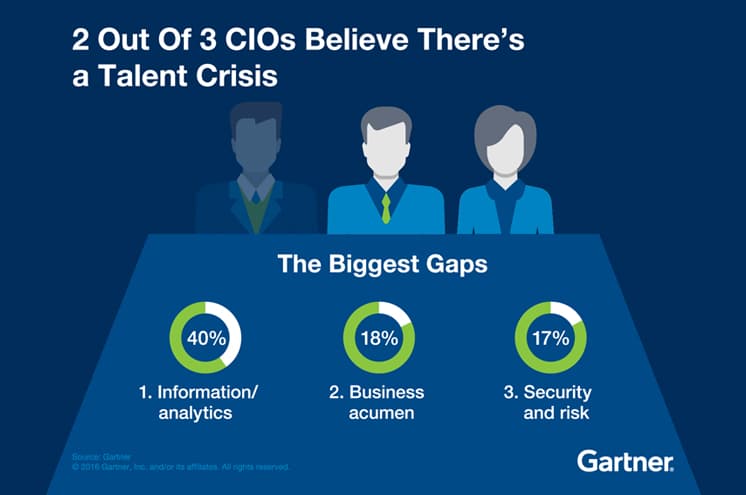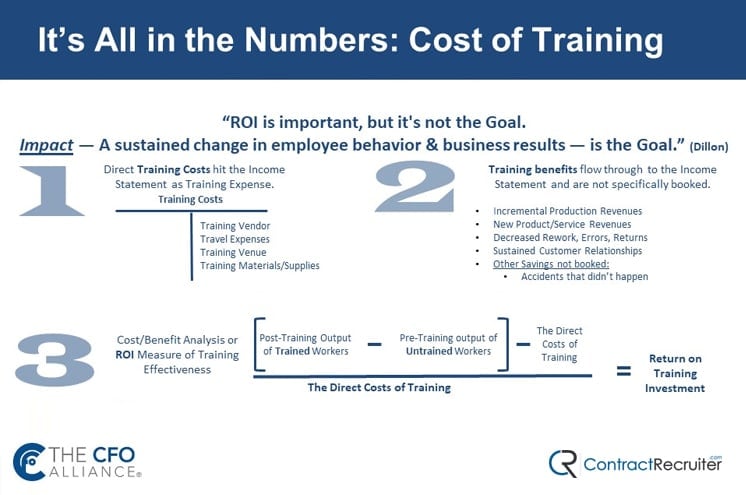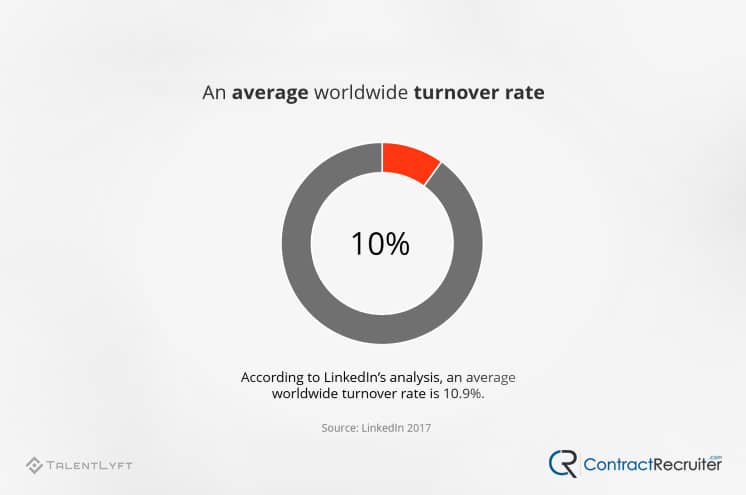One of the biggest hurdles of talent management – more so than many other departments – is justification. Sales teams have easy sales reports and conversion data to share. Marketing can easily report their spend versus revenue. Talent management? Well, measuring and showcasing their return on investment is a bit more complicated.
Measuring your return on investment isn’t just for showing off to the bosses. While justifying the expenditures to the CEO/CFO/CIO and other executives is important, it’s also a good way to benchmark performance from quarter to quarter and year to year. It’s data you can use to measure the value of optimizations, changes, tools, and investments that you make in your overall talent management process.
Whether you’re trying to measure the efficiency and cost of your in-house HR department, or you’re trying to measure the success of your current or future talent manager, this guide will help you focus on the metrics that matter.
Recognize the Link
One key to measuring ROI is understanding the link between the investment and the return. With sales, it’s easy; you have the expense of manufacturing a product, the expense of order fulfillment, the profit of the sale, and so on. It’s a rather simple and direct calculation.
![]()
![]()
For something like talent management, the link can be more difficult to see. Here are some ways that the link manifests:
- Reducing the time to hire results in less lost productivity from empty roles, and gets people up and running faster.
- Reducing time to hire and increasing quality of hire reduces the overall amount you spend working with a recruitment agency, thus reducing the cost of that agency’s contract.
- Consistent onboarding reduces turnover, which is costly itself – up to 2.5 times the salary of the candidate.
- Streamlining training processes reduces the overall cost of training, including physical materials and in-person training sessions.
These and other links can be very important. Employee turnover is one of the most costly investments a company has to make, and it varies from role to role. According to PeopleKeep:
“Some studies predict that every time a business replaces a salaried employee, it costs 6 to 9 months’ salary on average.”
Moreover, for a C-level executive, it can cost over 200% of their salary, which means a $100K CEO might cost over $200K to replace.
Understand What Matters
You might understand intuitively that hiring better people for a job makes a business stronger, or that hiring someone a little less experienced and training them can be a better investment than hiring someone with a higher experience level. What you need to recognize, when calculating ROI to present, is what matters to the people you’re presenting to.
The most important people to keep in mind when calculating ROI is the C-level executives in charge of making decisions. The CEO, the CIO, and the CFO are all important decision-makers, but they’re also all focused on different areas of the business. That is, after all, why your company has all three of them. If they were redundant, you wouldn’t need them all.
What is your CIO looking for? Chief Information Officers are usually most concerned with institutional build-up and layered systems. They want to streamline a business to remove barriers between employees and the tasks they need to perform. According to Gartner, they often “rank talent as the no. 1 barrier to achieving their objectives.”


Their goal is not just to see their number of team members grow, but to see a streamlined hiring process. They want to see how you’ve used your time and investment and used it to create more effective and more efficient processes. They want to see your results of hiring better candidates for each role, reducing turnover, and doing more with less.
What is your CFO looking for? Chief Financial Officers are, of course, concerned with revenue and spending. They’re the most aware of the value of efficient and high-quality tools. They’re also often hyper-aware of the problems inherent in hiring underskilled employees for any given role, citing talent shortages as their largest constraint.


CFOs are most likely to be won over with monetary considerations, though they will also be aware that there’s more to the value of an employee than their salary and the profits they help generate. You may need to justify expenditures on new processes and tech, with tangible evidence of results.
What is your CEO looking for? Chief Executive Officers are guiding the overall course of the business, and as such, they need a bird’s eye view of the entire organization. They don’t need to be muddied down with minute details; rather, they want a broad overview of the pros and cons of various investments, processes, and tools.
CEOs tend to be very aware that the skill level of their employees is a critical factor in their success. A high skill cap or a skill shortage can lead to devastating consequences over several years, and turnover is one of the major risks.
Of course, all of this, for all C-levels, can change from organization to organization. Different C-levels have different backgrounds, and some of them may be more understanding and receptive than others. It can be worthwhile to talk to each in turn, if possible, to understand what their specific goals and needs are, and how to present information to them.
Find a Place to Start
Before you can measure a change in return on investment, you need to have a baseline. Before you can establish a baseline, you need to think long and hard about your metrics.
What are you measuring? You need to identify metrics that you can measure, and that matters. Sure, you can measure the average hair length of qualified candidates, but that’s meaningless data. You want to measure specific data that has a real, tangible impact on business processes and their end results.
Turnover. Measuring turnover is one of the most important, tangible metrics you can monitor with a monetary cost associated with it. As we have already mentioned, the cost of turnover can be very high, particularly for higher-skilled and higher-ranking positions in your organization. Turnover impacts your finances directly, but it also impacts employee morale and productivity, which suppresses growth.
Luckily, turnover is something that you can measure. You can track hard numbers for how many people are leaving and from what departments and positions, how quickly any given position turns over, and how much it costs to fill those vacancies.


Pay particular attention to problem positions. Measuring this data can help you identify areas where, for example, a bad manager is driving away a lot of good talent. Denise Brandenberg writes on Chron:
“There are several ways poor management affects turnover rates in a small business. Managers who operate like dictators, refusing to take other people’s opinions into consideration, [scare] off good employees. Companies that do not have 360-degree feedback tools or performance reviews that allow subordinates to rate their managers, also are at risk of high turnover. The bottom line is that when employees do not feel appreciated, or even feel as if they are taken advantage of, they do not want to continue working for their managers.”
Productivity. Measuring productivity can be somewhat harder than measuring something as obvious and financially-tied as turnover. Productivity can be nebulous for many employees. More importantly, monitoring productivity metrics is never a one-size-fits-all solution.


For example, in an assembly line, working faster directly correlates to more product leaving the line. On the other hand, an IT worker completing their tasks faster does not necessarily make the business better overall. Measuring the average time spent on a task just leads to competition for simple tasks and problem tasks shuffled off and ignored. This is a common problem in call centers, where measuring the time spent on a call and incentivizing short calls leads to worse service because the employee’s goal is no longer service quality, but speed.
Time saved. Similar to productivity, you can measure time spend on certain kinds of tasks that can be sped up through the use of tools and processes, outsourcing, or another aspect of talent management. If your HR team is tediously creating performance reviews to process every quarter, something as simple as making a template they can use can save hours of work every quarter. In business, time is money, so efficiencies like that are directly responsible for better use of time and money. Your HR team may be able to spend that time doing something more useful to your organization.


Even the actual measurement of your key performance indicators can be streamlined. Many modern tools and platforms for talent management have built-in metric tracking and can monitor those metrics for you, without you needing to tediously measure and calculate them time and again. This might take integration with existing systems, or even the replacement of those systems, but it can be valuable overall.
Once you have identified the metrics you want to measure and how those metrics are directly relevant to the interests of your C-levels and anyone else who needs to care about talent ROI, you can start the measurements.
At this point, you also have to decide how often you are going to measure your metrics. Some are as-they-happen, like turnover. Others might be ongoing measurements, like the performance metrics you monitor for employee activity. Figuring out how often to take measurements and compare them is critical.
Finally, when it comes to benchmarking your success, PageUp says:
“A common mistake people make is to fixate on trying to hit an industry benchmark. Benchmarks should act as a way to determine your HR strategy, not dictate targets you have to meet. They show you how you’re tracking relative to others in your industry so you can see where you’re doing well and identify areas for improvement.”
Remember to only consider your own benchmarks for decision-making.
Determine a Path to Improvement
Once you have measured data over a long enough period, you can start putting that data to use. Some decisions will need to be made at an institutional level by your C-levels, while others will be better implemented at a managerial level.


Some considerations may include:
- Looking for opportunities to streamline business processes. Whether you’re using an inefficient tool or you’re in need of a tool to replace manual repetition, identifying weaknesses in existing business processes gives you the opportunity to implement solutions to problems identified by your metrics.
- Monitoring turnover to watch for problem areas and seek out causes. The above example of a problem manager driving turnover is a key example. The manager themselves might look good on paper, but their attitude or their treatment of their subordinates causes extreme and unnecessary disruption to productivity, both through their own actions and through the disruption caused by turnover. Removing the problem element can be an immediate up-front cost, but the improvement to the department, to employee morale, and to overall turnover is worthwhile.
- Reviewing metrics to ensure accuracy of measurements. Every so often, it’s worth conducting a review of your metric measurement to ensure that you’re still measuring the right information in the right way. The call center example is a good one to illustrate a failure in measurement. Implementing measurement of a metric can change employee behavior to adapt to that measurement, which itself can cause suppression in productivity. Review metrics to ensure they aren’t themselves a problem.
Finally, look for the benefits and growth you’ve achieved. When you implement a change, you can monitor metrics and see improvements. Setting SMART goals allows you to draw a direct comparison between the actions you take and the benefit to metrics they show. That, in turn, can be written and contextualized. For example, being able to say you reduce employee turnover is good, but it’s better to be able to say “Our first-year retention of new employees is 80%; the industry average is 75%, so we’re doing well”. Contextualizing your metrics is how you present ROI in more than just an abstract sense.
This presentation of ROI is the ideal report to deliver to your C-levels and other decision-makers. As Cornerstone says:
“With talent management best practices in place, you can build a world-class workforce that is aligned, inspired, and delivering exceptional results – and most importantly, helping your organization achieve its strategic goals.”
Establishing measurement and understanding metrics is the key to developing an understanding of your talent ROI.


